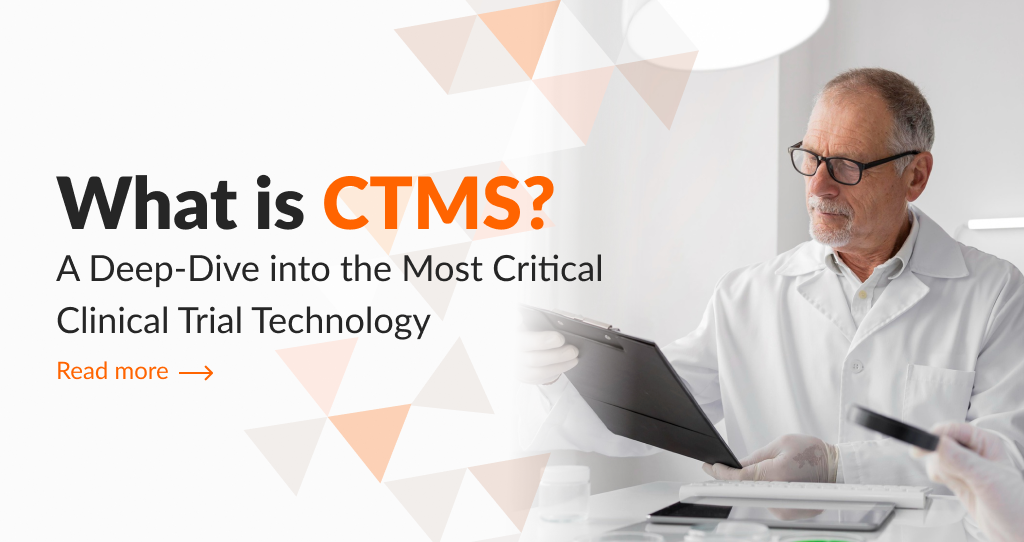In today’s busy world of clinical research, efficiency and organization can be the determining factor for success or expensive delay. That's where a Clinical Trial Management System (CTMS) is critical, but what is it, and why is it such an invaluable asset to research teams?
Let's break it down.
Understanding Basics: What is a CTMS?
A clinical trial management system is an advanced software platform that allows clinical research teams to plan, manage, and track the various elements of a clinical trial. Pharmaceutical companies, contract research organizations (CROs), hospitals, and academic research institutions utilize these systems to streamline trial processes from initiation to completion.
Consider CTMS as mission control for clinical trials. It consolidates trial data and trial-specific tasks into one central hub that enables teams to remain organized, compliant, and on track.
Main functions of a CTMS
A CTMS assists every aspect of the clinical trial process. The following is what it generally assists:
- Planning and Setup of Study: The CTMS assists in establishing study design — timelines, protocol, sites, investigators, and budget — before trial initiation. The team is able to plan milestones and assign resources using the system, ensuring that everyone is on the same starting line.
- Site and Investigator Management: Handling multiple trial locations and investigators is not an easy task. A CTMS monitors site activity, enrollment status, document history, and communication trails, as well as keeping track of regulatory submissions to ensure that every site is following study protocols and GCP rules.
- Tracking and Enrollment of Participants: A fundamental task of any clinical trial is keeping track of enrollment and retention of participants. CTMS systems enable researchers to track who has been enrolled, as well as screen failures, dropouts, and follow-up status. Visibility enables teams to refine recruitment strategies in real-time.
- Budgeting and Financial Management: Clinical trials frequently include intricate budgeting as well as payment schedules. A CTMS can manage site payments, reimbursement, and contractual terms to evade delay or inconsistency. This functionality is particularly useful while working on multi-site or international studies where different financial agreements need to be made.
- Document and Compliance Management: From consent forms to site certifications, a CTMS is an electronic repository for every document needed for trials. The systems tend to include audit trails and version control, keeping teams inspection-ready and compliant with organizations such as the FDA or EMA.
- Reporting and Metrics: One of the key benefits of implementing a CTMS is that it allows real-time reporting. Dashboards and analytics provide insight into study status, site performance, and resource usage, enabling managers to make informed decisions in real time.
Why does a CTMS matter?
Clinical trials are by definition intricate, involving tight schedules, regulatory hoops to jump, and ensuring that multiple different parties work smoothly together. All of this can be done manually or using spreadsheets, which leaves it open to mistakes, miscommunication, and delay.
A CTMS minimizes such risks by offering:
- Increased transparency into trial progress
- Enhanced data accuracy and consistency
- Real-time reporting to enable quicker decision-making
More efficient use of resources
In the end, an effective CTMS enables study teams to get treatments to market more quickly and safely, ultimately benefiting not only sponsors but also patients waiting on potentially life-altering therapies.
Selecting the appropriate CTMS
Numerous CTMS solutions are commercially available, each of which has its advantages. They range from enterprise-level solutions for pharma companies to systems that cater to small research groups or academic institutions. Organizations can choose an appropriate CTMS based on ease of use, integration (such as EDC and eTMF integration), scalability, and vendor support.
Final Thoughts
In an industry where accuracy, speed, and regulation are paramount, CTMS is not merely an added benefit — it's an absolute requirement. By streamlining clinical trial functions, enhancing visibility, and fostering collaboration, CTMS systems enable research teams to work smarter and more effectively.
No matter whether you’re executing your inaugural trial or overseeing a global study portfolio, investing in a CTMS can simplify the process and aid in achieving the end goal: getting safer, more effective medications to the patients who require them.
Want to know more about how Octalsoft’s CTMS can help expedite your next clinical trial? Book a demo with our experts today!




